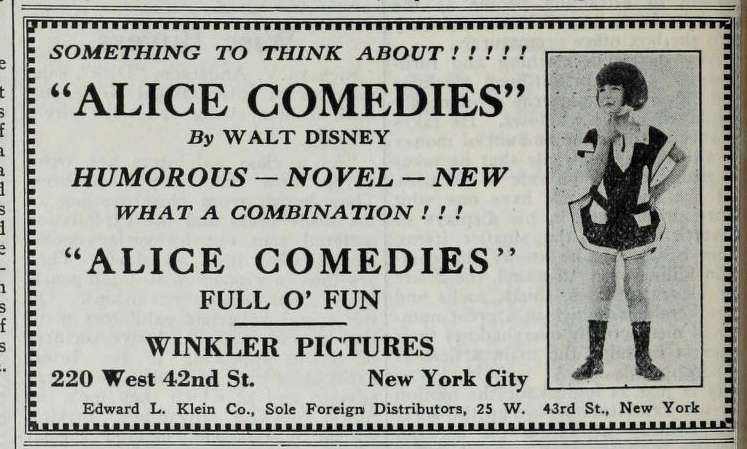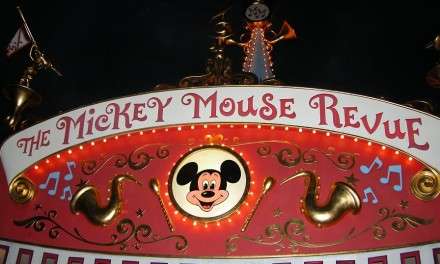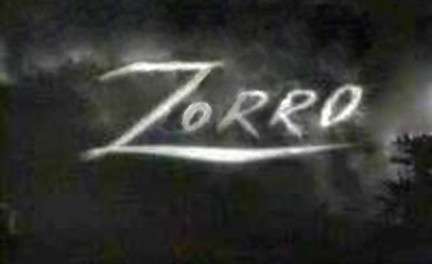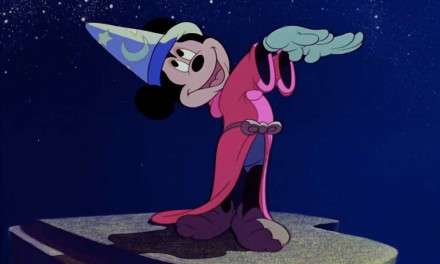History has always been a fascination in my life. From my earliest recollections, I have been enamored with the past, and this is especially true when it comes to my favorite subject, Walt Disney. Along the way, I have also become a card carrying nostalgic. With today’s CGI computer controlled world, cartoons and movies have rocketed ahead light-years from what they were just a short time ago. Now Walt would be in his element, he always embraced technology and science, lauding the latest and greatest to produce his creations. But sometimes, I long for the simple and entertaining early cartoon shorts, where the rubber hose technique was king and the characters did not adhere to the laws of physics. (Mea culpa to Walt, forgive me!). And it seems that much written today is about all the new and techno advances in the parks, Pandora, the new Star Wars and Toy Story areas coming to the Studios, and the newest rides and attractions.
Many gloss over the fascinating history of the Disney Company, and how Walt, bankrupt and with just $40.00 in his pocket, roared back and forged together the greatest entertainment industry in the world. To experience the start of this enterprise, we must go back a bit ourselves and see how fate, timing and plain old good fortune, and not to mention one of Walt’s earliest efforts, forged the way to the Walt Disney Company.
Walt Disney recalled that even as a child, he enjoyed art and quipped that he was interested in drawing “Almost as soon as I could hold a pencil” And thanks in part to his Aunt Margaret’s encouragement and praise, and her gifts of Crayola crayons and big drawing tablets she gave Walt during his years on the farm in Marceline, he began drawing everything he could. A Doc Sherwood in town formed a friendship with young Walt, and was always praising his drawings. He had Walt draw a picture of his horse Rupert and gave him a nickel for it. Walt’s brother Roy said he remembered that drawing and Doc Sherwood all his life. You could say it was Walt’s first art sale!
During World War I, Walt wanted to join the service like his brother Roy, but was underage. His did manage to join the ambulance service after the war, and stayed in France for a year before returning to the states. It was the time in France that Walt spent hours drawing on his pad, and even on the sides of the vehicles. He even had some of his work published in the army newspaper Stars and Stripes. Walt returned home in October, 1919 and began to seek work as an artist. Walt spotted an opening at the “Star Newspaper” for an office boy. Walt always dreamed of working there. To shore up his chances, he showed up at the Star office, in full Red Cross uniform, hoping it would make him appear more mature. However, a year in France and growing bigger, he looked much older than a 17-year-old, and was rejected. As he has always done when in distress he sought Roy’s counsel. Roy knew that a commercial art shop was looking for an apprentice. Walt showed up at the Pesmen-Rubin Commercial Art Studio, armed with samples of his drawings from France. He was hired on the spot. His tasks included advertisements, letterheads, theater programs and catalogs. This dream job was short-lived. After the Christmas rush was over, Walt was let go harmoniously. But perhaps the most important occurrence in this brief employment was the befriending of fellow artist, and future lifelong friend, Ub Iwerks.
After the layoff, Walt and Ubb (The way it was spelled then!) decided to go into business themselves, and started the short-lived endeavor, the Iwerks-Disney Commercial Artists. However, a new opening in advertisement was at the Kansas City Slide Company. This company made animated short cartoons for movie theaters. Trying to save their neophyte business, Walt agreed to take a job at the Ad company to make money, and Ubb would run the business. However, Ubb was not a businessman, the business closed and Ubb joined Walt at the Film Ad Company, run by A.V. Cauger. It was at the Ad Company that Walt developed a new interest and passion…Animation.
At the time, animation and its techniques was in their infancy and primitive at best. The process at the Slide Company was a technique of stop-motion photography of cutouts that were pinned to a piece of paper and slightly moved for each frame of the film. Walt Disney then read about other animation techniques that utilized drawings instead of cutouts. Walt convinced Cauger to borrow an old camera at the shop and use it to shoot and write his own ads. With this camera and a book on animation and using the garage in the back of their house as a studio, Walt spend endless hours experimenting and began to make films using drawings. He came to the conclusion that cel animation was more favorable than the cutout method. However, he was unable to convince Cauger to try cel animation, Walt and Fred Harman, a co-worker from the Film Ad Company started a new business. Soon, the Slide Co. moved to a bigger building and was renamed the Kansas City Film Ad Company. Between the hours drawing at the Film Ad, and drawing and shooting his films and studying animation, Walt was becoming very adept at his new passion.
Their first client was the local three theater Newman chain, the one he had illustrated for at Pesmen-Rubin. Walt came into the office with his one-minute reel of cartoons that he labeled “Newman Laugh-O-Grams. After viewing the reel, Manager Milton Feld and Newman himself placed an order and Newman said he would take as many Laugh-O-Grams Walt could draw. Walt was now an animator. The first six “Laugh-O-Grams” were modernized fairy tales, the first a new take on the version of “Little Red Riding Hood”. The following cartoons, commented on streetcar service, potholes, a police scandal and new fashions. But because Walt quoted a price to Newman which included only his cost, he never made any profit on the films.
The Laugh-O-Grams were successful, if not profitable, and that led to the establishment of Laugh-O-Gram Studios, now Walt hired more animators, including Fred Harman’s brother Hugh, Rudolf Ising and Iwerks. But the cartoons didn’t produce enough income to keep the company afloat, so Walt, a fan of Max and Dave Fleischer’s “Out of the Inkwell” series, starring Koko the Clown, a cartoon clown playing in the real world, started production of “Alice’s Wonderland” which reversed the premise, and placed a live girl Alice, played by 6-year-old Virginia Davis (The first of four actresses in the series) in a cartoon world. The plot was simplistic, but sound… Alice visits the Walt Disney Studios, where the animators (including Walt Disney) show her various scenes on their drawing boards. A few of them, a cat dancing to a cat band, a mouse poking at a cat until it moves, a couple of mice boxing, while the animators crowd around cheering and acting as corner-men. That night, she dreams of taking a train to cartoon-land. She appears in live action. They have a welcoming parade, with Alice riding on an elephant. The cartoons dance for her, and she dances for them. Meanwhile, lions break out of the zoo. The lions chase her into a hollow tree, then into a cave and down a rabbit hole. Finally, she jumps off a cliff and awakes back in her bed.
But this 12-and-a-half-minute reel still could not save Walt’s Laugh-O-Gram studios, and he went bankrupt in 1923. It was this bankruptcy that formed the iconic tale of Walt, with only $40.00 in his pocket and the reel of “Alice’s Wonderland” that he traveled by train to California to meet up with his brother Roy and start anew. Now we must understand that Walt was now in California, trying to make a comeback, but to fully understand the probabilities rearing their ugly heads against him, he faced these factors…He had no studio, no animators, really no money and no job. All he had was that copy of “Alice’s Wonderland” and had been looking, to no avail for a distributor. Even before leaving Kansas City, Walt had sent multitudes of letters soliciting distributors for his film.
At the time, the major distributors for cartoons were on the east coast, namely New York. One distributor, Margaret Winkler, who was the first only female distributor at the time, had contracts to distribute the two hottest cartoon properties… Pat Sullivan’s Felix the Cat and Max and Dave Fleischer’s Koko the Clown. Walt had contacted her again, and promised her of having “just discovered something new and clever in animated cartoons” Between the two venues, she was the leading animation distributor in America.
So returning to Walt’s gift of timing, fate and good fortune, he sent Winkler a copy of “Alice’s Wonderland” in May of 1923. The timing could not have been better. Pat Sullivan, Felix’ creator had a problem with alcohol, and the Fleischer Brothers wanted to leave. These major roadblocks left Winkler unsure if she could retain the rights to these properties. This is most likely that she entertained Walt, an unknown novice, feeling she had nothing to lose by viewing the work; hoping this could be a new series for her. She finally screened “Alice’s Wonderland” the first week of October, was intrigued with the idea of a live-action girl in a cartoon world. She wired Walt back on October 15 saying…” Believe series can be put over” She also added, as a way to limit Walt’s fiscal expectations…” This being a new product must spend large amount on exploitation and advertising, therefore need your cooperation”
To Walt’s delight, she offered $1500.00 for each negative of the first six films, and $1800.00 for the second six. The next day, she sent out the contracts to Walt and Roy. But She wanted Virginia Davis, the girl in Wonderland. Also, Walt had no studio, nor animators. He promised the first film, “Alice’s Day at Sea” to be delivered by December 15th. Walt and Roy convinced the Davises to move to California and he recruited animator “Ham” Hamilton” to help on the animation. With his “Star” and an animator, Walt and Roy rented an office at the rear of the Holly-Vermont Realty Company at 4651 Kingswell, and later added his lifelong friend Ub Iwerks to his fledging staff.
Walt and Roy signed the contracts with Margaret Winkler on October 23, 1923. This is considered the beginning of the Walt Disney Company. The upstart studio was named the Disney Brothers Studios. Walt and Roy continued to deliver these innovative Alice comedies to Winkler until they ran their course and a new character was requested. But these simple early efforts by Walt were instrumental in the beginnings of the Walt Disney Company. Walt Disney’s enthusiasm and persistence, and never say die attitude is what carried him throughout his life. And the result of that unbounded determination is evident in what the Company is today. But we can thank “Alice’s Wonderland” and the Alice Comedies for the gift of the Walt Disney Company to the World!
Here are some quick facts about the series…There was a total of 56 Alice Comedies produced. There were 4 different actresses who portrayed Alice…Virginia Davis, Dawn O’Day, Margie Gay and Lois Hardwick. Virginia was first, working for Walt at 6 years old. She starred in the first 13 films. Dawn O’Day starred in only the 1925 release of “Alice’s Eggplant”, Margie Gay took over from February 1925 to December 1926. Margie had short, straight black hair, as opposed to the other girls. When she left, Lois Hardwick finished up the series, ending with “Alice in the Big League”, summer 1927. Virginia Davis was named a Disney Legend in 1998. Although these “Comedies” were somewhat successful, they provided the capitol to move to a bigger studio on Hyperion Ave. in 1926.So it was these simple, yet for the times, entertaining films that launched the Disney Brothers neophyte studio into the Happiest Place on Earth…





